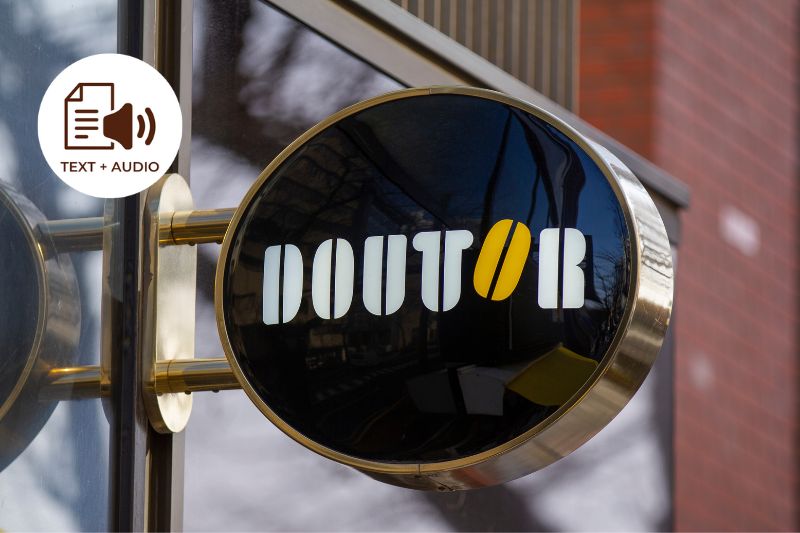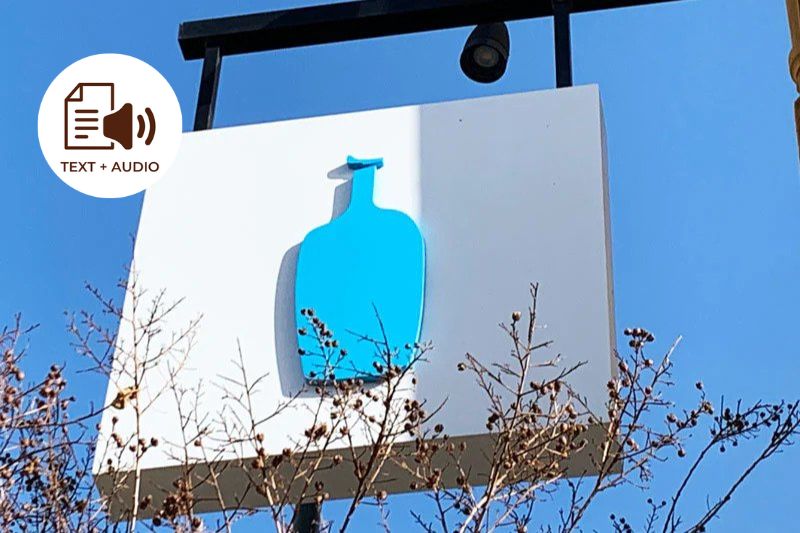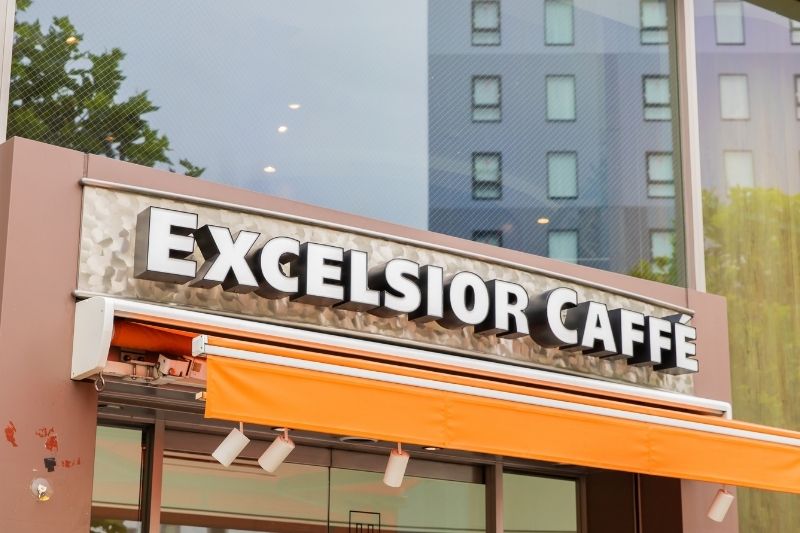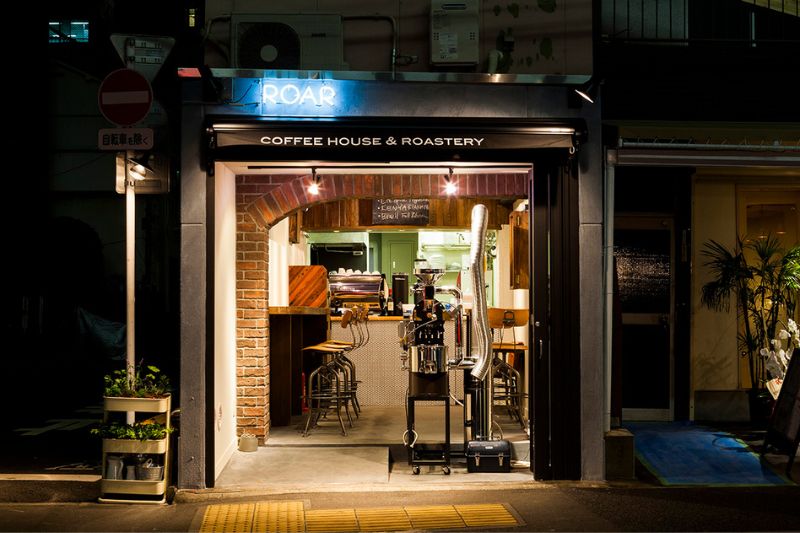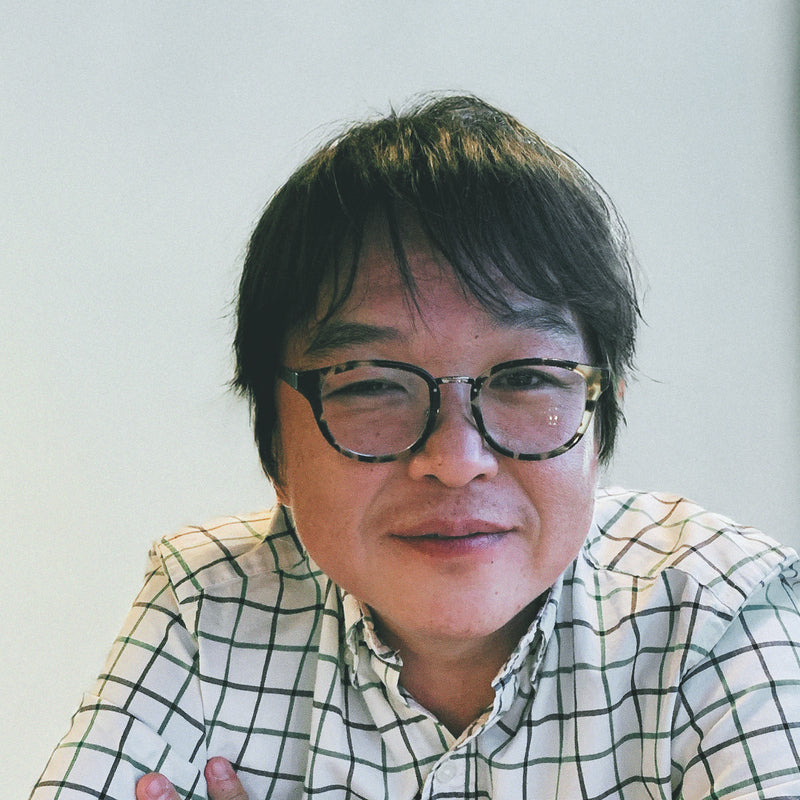Costa Coffee. Does it sound familiar? Many of us might recognize it from its welcoming red cups or a trip to Europe; after all, it is the second-largest coffee chain in the world and the largest in Europe.
Today, I bring a piece of exciting news regarding Costa - a few days ago, on August 4th, 2023, Costa opened their first coffee house in Japan, in the bustling Shibuya district of Tokyo. In addition, two more outlets – one in Otemachi and another in Ginza are scheduled to open in September and October of this year. On the launch day, it saw long queues of people lining up for a taste of Costa Coffee and was featured on several national news channels such as TV Tokyo and ANN (all Nippon News network).
On the surface, Costa’s outlet opening might seem like simple news, but looking closely into it, you will find it has many exciting aspects. For example, did you know that the first Costa outlet in Japan opened next to a Starbucks outlet? Isn’t that literally a ‘coffee war’?!

Also, even though the first outlet opened only this week, Costa Coffee’s ready-to-drink bottled products and automated coffee machines have been around in Japan since 2020, meaning Japanese people have a good brand awareness when it comes to this British brand.
Another lesser-known fact about Costa coffee is that it is owned by Coca-cola, a company that has been in the Japanese market since 1957. With all these mind-blowing facts, I could not but write about the entry of Costa Coffee into the Japanese market and share all my findings with you. Let’s jump right in!
Who is Costa Coffee?
Costa Coffee is a British Chain coffee shop founded in 1971. The company's name - Costa, comes from the two Italian brothers – Sergio and Bruno Costa, who travelled from Italy to London with a dream to create a coffee shop that served the finest quality coffee. They started off with a small roastery in Fenchurch Street in London, where the two passionate brothers blind-tasted 112 different blends of their in-house roasted coffee until they agreed on one delicious recipe. This signature blend, “the Mocha Italia Signature Blend,” remains the secret classic Costa coffee blend recipe that is served throughout Costa coffee shops all over the world.
In 1981, Costa Coffee opened its first coffee shop where guests could come and enjoy Espresso and Cappuccino made from freshly roasted Costa Coffee.
Today, Costa Coffee is the second largest coffee chain in the world, the largest coffee chain in Europe, and has been awarded UK’s Favorite Coffee Shop consistently over 13 years!
Costa exists in 45 countries and operates more than 2800 cafes in the UK and Ireland and another 1100+ cafes in the rest of the world.
Who is the Franchisee of Costa Coffee Japan? (Who will run/ manage the Costa Coffee outlets in Japan)
The franchise system is one of the most common methods used by big chain-store companies such as McDonald’s, Dunkin Donuts, Krispy Kreme, Burger King, KFC, and many others. In this system, a franchisee buys the right to operate a business using the trademark and business model from the franchisor.
In the case of Costa Coffee Japan, a joint venture company based in Tokyo called Sojitz Royal Cafe Corporation acquired the exclusive rights to run Costa outlets.
About Sojitz Royal Cafe Corporation
Sojitz Royal Cafe Corporation was established in January 2023 as a joint venture between Sojitz Corporation and Royal Holdings Co. Ltd, both well-established Japanese companies with years of expertise and success in their fields.
This joint venture was created to act as the sole franchisee of Costa Japan. The two Japanese companies that came together in the joint venture initiative to operate Costa Japan outlets are as below:
- Sojitz Corporation (Est. 2003)
Sojitz Corporation is a well-known Japanese Sogo-Sosha company. Sogo Sosha are general trading companies in Japan involved in a wide range of business activities, including export and import, manufacturing, logistics, exploration of international markets, etc. Sojitz corporation, headquartered in Tokyo, has hundreds of subsidiaries and affiliates (131 Domestic and 312 Overseas!).
- Royal Holdings Co. Ltd (Est. 1950)
Royal Holdings Co. Ltd, based in Tokyo but operating nationwide, is a well-established name in the food and hospitality industry. It works in multiple segments such as chain-restaurant management, running specialty restaurants, providing in-house catering services, management of hotel businesses, and food infrastructure functions such as logistics, production, and sales.
Is Costa Coffee owned by Coca-Cola?
When you go to the Japanese Coca-Cola website, you will find a page dedicated to COSTA
In 1995, Whitbread PLC, a leading British hospitality firm, acquired Costa Coffee for about USD 24 million. However, Whitbread was pressured by its investors to focus more on its hotel business and pull out of the coffee industry.
In 2019, Coca-Cola, the world’s beverage giant, announced its completion of a $4.9 billion acquisition of Costa Coffee from Whitbread PLC.
Having Coca-Cola as the parent company has greatly benefited Costa Coffee’s entry into the Japanese market, as Coca-Cola already has a strong presence in the Japanese market since its first official entry in 1957. Using the resources and connection of Coca-Cola, Costa coffee was introduced in Japan in 2020 through ready-to-drink (RTD) bottled coffee drinks and Costa Express Machines (self-serve coffee-making machines). (More on these in a later section of this article).
What can I expect from Costa Coffee Japan’s first outlet – Coffee, Interior, and Menu
Some of the first questions you might have when it comes to the first Costa coffee shop that opened in Japan, is
“What do I expect to find there?”
“What is their coffee like?”,
“How does the cafe look and feel?” etc.
This section is going to answer all these questions you might have!
Overview of Costa Coffeeshop in Japan
|
Store Name
|
Opening Date | Address | Seating Capacity | Business Hours |
|
Costa Coffee Circle Shibuya |
10 a.m., Friday, August 4, 2023 | 2-9-8, Shibuya, Shibuya-ku, Tokyo | No seating area, only takeout and standing bar inside the store | 7 a.m. - 10 p.m. |
| Costa Coffee Ootemori | 10 a.m., Friday, September 1, 2023 | 1-5-5 Otemachi, Chiyoda-ku, Tokyo | No seating area, only takeout | 7 a.m. - 9p.m. |
Design and Interior:
The store's design concept is 'Uplift' or 'Akarui (bright/cheerful).'
The interior uses the signature Costa Pink and Costa Red accents to create an uplifting, pop, cheerful vibe inside the cafe.
Costa Red is a particular type of Monarch red (rose red of medium-dark shade) used in Costa Coffee's logo, the barista's uniform, the takeaway cups, the interior designs, etc. It is a rich, warm colour, representing the Costa Brother's passion for premium coffee. The use of Costa red and Costa pink accents make the stores cheerful, inviting, and pop, but also classy with a touch of elegance.
As mentioned in the overview, these stores do not have seating capacities and are focused primarily on take-out orders.
Coffee:
Costa Coffee's dedication to providing the finest quality coffee has been kept alive since the early days of the company's establishment when the founding brothers Bruno Costa and
Sergio Costa taste-tested through 112 different blends of coffee until they reached the final recipe. This blend recipe is called 'Mocha Italia' and remains Costa Coffee's signature blend.
Costa Coffee's 'Mocha Italia' blend recipe has been kept a secret, but it is known that the blend is made by mixing Robusta and Arabica beans. Despite the use of Robusta beans, the blend has a subtle flavor and a smooth mouthfeel. The blend is relatively sweet, with caramel and nutty notes.
Needless to say, Costa sources and roasts their own coffee beans. They have a state-of-the-art coffee roasting plant in Basildon, Essex. Their roastery is one of the biggest roasteries in Europe and roasts around 45,000 tonnes of coffee a year. Another impressive feature of Costa's coffee roastery, apart from its size, is that it is one of the most sustainable buildings in the world. For example, the roof of the building is equipped with 249kw of solar panels to generate renewable solar energy. Due to sustainable features like this, Costa's roasting plant became the first industrial site to be awarded the BREEAM (Building Research Establishment Environmental Assessment Methodology) Outstanding Award.
In addition, Costa's raw coffee beans are sourced from 100% Rainforest Alliance Certified™ farms. You might have seen the Rainforest Alliance Certified seal, which features a cute little frog. This seal is a certification that the product came through a method that supports social, environmental, and economic sustainability.

Once the coffee beans are roasted and blended into Costa Coffee's signature blend, they are sent out to the store locations, where they are turned into beautiful cups of espresso-based coffee drinks made with love and care by Costa's baristas. Costa Coffee's baristas are trained through Costa Coffee training academies, and to inspire them, Costa holds a "Barista of the Year" championship every year.
Another incredible fact about Costa Coffee’s passion for coffee is that Costa Coffee’s “Master of Coffee” (Coffee Taster), Gennaro Pellicia, holds the Guinness World Record for “World’s most valuable tongue” and made news headlines all over the world when his tongue was insured for $14 million.
Menu:
Costa Coffee's most popular coffee drink is their signature 'Flat White.' It uses 1.3 times more coffee than the usual coffee drinks so that you can enjoy a deep, full-bodied taste of espresso balanced by perfectly steamed milk's rich taste and smoothness.
Apart from their 'Flat White,' you can have your favorite hot espresso-based coffee drinks such as Espresso, Americano, Cappuccino, Latte, Cortado, etc. They also have cold coffee drinks, such as Iced Flat White, Iced Cappuccino, Mocha, etc.
No modern chain coffee shop is complete without its repertoire of frappes, and Costa Coffee understands this.
What I especially like about their Frappes is that they add real bits of ingredients so you can enjoy 'eating' some parts of the Frappe, such as the real bits of peach and strawberries in their Strawberry frappe, the adzuki bean bits in their 'Matcha Frappe,' etc.
They also have small savory, and sweet items for a quick bite to go with your coffee.
When you think of France, the first baked food that comes to your mind is a croissant. Similarly, an iconic coffee or tea-time food that instantly makes you think of the UK is 'scone.' Reflecting its British origin, Costa Japan offers a "scone sandwich" on its menu.
You can take a quick look at their menu here.
Why I think Costa Coffee’s entry into the Japanese market will be successful. What smart tactics did they use to enter the Japanese coffee-chain market?
1. Entering the market on a small scale and creating brand awareness before opening its first outlet
Although Costa Coffee opened its first cafe outlet only last week, Costa Coffee products and pop-up shops have been around Japan since 2020. Their Japanese website and social media pages have already been quite active virtually.
- Costa bottled drinks
Costa’s bottled coffee drinks have been available in Japan since late April 2021. Japan’s love for vending machines and RTD drinks in pet bottles and cans is globally renowned. Costa Coffee was very clever in leveraging its parent company Coca-Cola’s dominant power in this sector and started selling bottled Costa coffee drinks across vending machines, convenience stores, and other locations all over Japan.
Although Coca-Cola Japan has its own RTD coffee drink brand, “Georgia,” Costa Coffee RTD drinks are developed as Coca-Cola Japan’s premium RTD drinks.
In June 2023, they even added a new flavour for the bottled coffee line-up: Honey Latte.
You can take a look at Costa Japan’s full range of RTD products here.
- Costa Express Machine
When you go to any convenience store in Japan, you will notice that there is an automated hot coffee drink serving machine, where you place a cup and press a button to choose your drink, such as Latte, Americano, or Cappuccino, and the machine makes the drink into the cup.
Costa Express Machines are similar to these automated coffee machines, with the unique feature of using Costa Coffee’s signature coffee blend, “Mocha Italia,” to make hot drinks. Their branding for Costa Express Machine is
“Serving barista quality coffee on the go. Real beans. Real milk. Real quick.”
The Costa Express machines are available throughout Japan in over 180 locations, installed in various establishments such as restaurants, movie theatres, office spaces, hotels, etc.
- Pop Up stores and coffee trucks
July 2020 saw the first opening of Costa Japan’s pop-up store in the busy Ginza district. There have been many other temporary pop-up stores throughout Japan since then, which allowed the customers to have a ‘trial’ version of the Costa Coffee experience.
2. Smart Choice of Cafe location to drive maximum traffic
When you walk to the first Costa Coffee location in Japan, the one that opened last week in Shibuya, you will most certainly pass by a green mermaid logo. You will probably stop in your steps and say,
“Wait a minute...was that green logo..was that a STARBUCKS I just passed by a minute ago?!”
On the surface, it sounds like a ‘crazy’ idea to open up the first outlet so close to their biggest competitor and also in an area that is extremely saturated with similar cafe businesses.
Shibuya is called “Cafe Gekisenku (カフェ激戦区), literally translating to “Cafe Battleground” (because of the high competition), and one Japanese news channel has reported that there are at least 11 other cafes in less than a 200m radius of Costa Coffee’s first outlet.


Japanese news channel reporters asked the CEO Mariko Nishio of Sojitz Royal Cafe Corporation (the joint venture company that acquired exclusive rights as a Costa Japan franchisee) about the reason behind the choice of location.
In her answer, she gave two reasons why they chose "Shibuya, the cafe battleground" as their first location:
- Shibuya is considered the birth spot for new trends.
- The area has high foot traffic (people on foot walking past the cafe) and therefore has the potential to draw a higher number of customers.
Seeing how close Costa Coffee outlet is to a Starbucks store has reminded me of a story about a tactic used by a U.S. chain coffee company that is still popular in Japan – Tully's Coffee.
Tully's Coffee was founded in Seattle in 1992. It was once a popular coffee chain business but closed all its U.S. stores permanently in 2018. Before going out of business in the U.S., Tully's tried many different strategies, which worked well in Japan, as they still operate over 760 stores in Japan.
Tully's Coffee Kumamoto Airport store opened in April 2023
One of the strategies Tully's tried in its attempt to stay popular in the U.S. was to open store locations very close to Starbucks stores. They followed this strategy so aggressively that it turned into a running joke in Seattle,
"The easiest way to find a Tully's is to stand in front of a Starbucks and turn around."
3. Localized marketing and promotional activities
One of the most critical factors for a brand to succeed in a foreign market is localization.
Localization is the adaptation of a brand to appeal to a specific market. To do so, they have to modify the products and marketing strategies to suit the target market’s language and cultural nuances.
- Localization of social media
Social media is an essential tool for any business to promote themselves these days. Costa Coffee Japan’s Instagram has been localized to cater to Japanese social media users.
Below are two photos showing the Japanese Costa Coffee Instagram page:
Now, compare this to the US Costa Coffee Instagram page and you will see the clear differences.
The U.S. Instagram site is photo-focused and a bit more personal, with photos that look like they were taken by a personal iPhone. In contrast, the Japanese Instagram page looks more like a business Instagram page with more professional-looking images and images with letters and characters alongside photos.
Costa Coffee Japan has also taken advantage of influencer marketing by featuring popular Japanese social media influencers in their posts.
For example, Costa Coffee Japan made a repost from Japanese social media influencer @risakoko, where she shared how she enjoys Costa Coffee's RTD drink at home.
They also cast cleverly for their TV CM (television commercial) advertisement by choosing Ryoko Yonekura as the lead actress.
Ryoko Yonekura is a well-known Japanese actress and former fashion model, and she carries the message of "premium quality coffee from Europe" very well in the T.V. C.M. videos.
Costa Coffee Japan Flat White TV CM
Costa Coffee Japan "Good time in European mood" TV CM
- Seasonal drinks
In Japanese culture and traditions, the celebration of seasons is significant. Most coffee and food businesses make seasonal menu items and products to draw the attention of their customers, and they are also encouraged to buy more as the seasonal products have a feeling of 'urgency to buy' as they are available for only a limited period of time.
Here is a seasonal drink campaign that Costa Coffee Japan did during the Spring of this year, featuring Matcha Flat White and Sakura Strawberry Latte.
- Point cards, reward campaigns, and loyalty programs
Japan is well-known for loyalty programs, and it is a strategy used by many large businesses to increase customer retention. For example, Tsutaya (Japan's biggest bookstore chain), Rakuten (the second largest e-commerce site in Japan), and Docomo (Japan's top cellular company) all have their point card systems.
Costa Coffee often does campaigns where users can earn points by buying Costa Coffee's RTD products. These points go to popular cashless payment services such as PayPay, えらべるPay (The user can choose to transfer the points to many different phone-based payment systems), and LINE Point.
They also did a campaign last year where you could earn a "Costa Coffee original stamp" or "One free Costa Coffee drink ticket" every time you bought a Costa Coffee RTD product from a vending machine with the "Coke-On" sign (these vending machines are operated by Coca-Cola Japan, the parent company of Costa Coffee).
In Japan, original goods or brand merchandise is trendy. Many people collect the authentic goods of their favorite brands. Costa Coffee is clever enough to use this Japanese consumer trend to its advantage. They often run a "Win Costa Coffee original goods" campaign.
In this campaign, you could win a set of two original Costa Coffee glasses by following Costa Coffee Japan's Instagram account, posting a photo of you enjoying Costa Coffee RTD products in the summer, and tagging their hashtag in the image.
This campaign was run during Valentine's season, where you received a "Costa Coffee Original shopping bag" every time you bought three or more Costa RTD products at the same time.
- Localized Products
Costa has successfully localized their brand to suit the Japanese market, and below are some examples of how it localized its products and services.
RTD drinks and Costa Express machines
Most Japanese coffee and tea giants have their own PET and canned RTD drinks, and Costa, having Coca-Cola Japan as their parent company, leveraged this market by releasing their own version of Costa RTD drinks, such as premium black, premium latte, and almond latte. These bottled coffee drinks are sold across Japan in convenience stores and vending machines.
Japan is also known for its automated coffee machines that are present in all convenience stores and busy areas such as train stations, in front of entertainment establishments, and in office spaces. Costa Express's automated coffee machines are present in more than 180 locations across Japan.
Japan-themed menu items
The ingredients available in Japan and the U.K. are vastly different. Although Costa is a British brand, they have added some unique menu items in their Costa Japan stores.
- Matcha Frappe: A Frappe that features Matcha and Azuki (sweet red bean) paste, two ingredients that are very popular among Japanese people.
- Black Sesame Butter Scone Sandwich: Black sesame butter (black sesame is a common ingredient used to make Japanese sweets and pastries) paste sandwiched inside a scone. Yum!
- Hojicha Latte: Hojicha is roasted Japanese green tea. The roasting of the tea makes it a mellow and milder tea with less bitterness, and it combines beautifully with milk in a latte.
4. Collaborations with other popular brands
There is a saying,
"Collaboration takes you further than competition",
and the saying is undoubtedly well-practiced in Japan.
Japanese customers love collaboration products, and we can see that even in the coffee industry – Blue bottle coffee x Human Made (Tokyo-based fashion label), Starbucks Japan x PORTER bags, Doutor x Hello Kitty.
Even though Costa Coffee has only been in Japan for around three years, they have already done a collaboration with one of the most prominent chocolate brands in Japan: Godiva.
Godiva (founded in 1926 in Brussels, Belgium) has more than 200 stores in Japan and has a whopping 90% brand awareness as a premium chocolate brand in Japan.
In January 2023, Costa Coffee Japan collaborated with Godiva Japan to create "COSTA x GODIVA Chocolat Latte," combining the rich, mellow taste of Costa Latte with praline chocolate sauce made by Godiva Japan.
Future of Costa Coffee Japan
With two more locations planned to open – one in September and the other in October, I think Costa Coffee is an exciting cafe to keep an eye on within the Japanese coffee scene. Have you been to a Costa Coffee shop? Do you like their flat whites? Let me know any thoughts you might have on Costa Coffee. I am always curious to know your thoughts!
Get Free Bonus Books

Sign up for free to the Coffee Club to get advice and exclusive articles about how to choose Japanese Coffee, and tips, tricks, and recipes for enjoying Japanese coffee.
About the author
Kei Nishida
Author, CEO Dream of Japan
Certification: PMP, BS in Computer Science
Education: Western Washington University
Kei Nishida is a passionate Japanese tea and coffee connoisseur, writer, and the founder and CEO of Japanese Coffee Co. and Japanese Green Tea Co., both part of Dream of Japan.
His journey began with a mission to introduce the world to the unparalleled quality of Japanese green tea. Through Japanese Green Tea Co., he established the only company that sources premium tea grown in nutrient-rich sugarcane soil—an innovation that led to multiple Global Tea Champion awards.
Building on this success and his passion for Japanese craftsmanship, Kei expanded into the world of coffee, pioneering the launch of Japanese Coffee Co., the first company to bring Sumiyaki charcoal-roasted coffee to a global audience. His dedication to authenticity and quality ensures that this traditional Japanese roasting method, once a well-kept secret, is now enjoyed worldwide.
Beyond tea and coffee, Kei has also introduced Japan’s legendary craftsmanship to the world through Japanese Knife Co., making handmade katana-style knives—crafted by a renowned katana maker—available outside Japan for the first time.
Kei’s journey continues as he seeks out and shares the hidden treasures of Japan, one cup and one blade at a time.
Learn more about Kei






